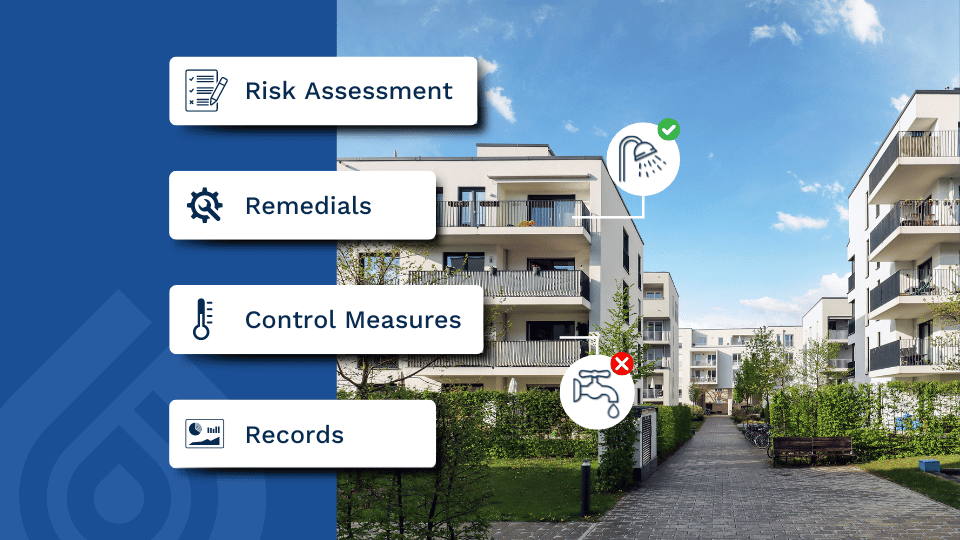The Importance of Maintaining a Proper Water Temperature for Legionella control
Maintaining proper water temperature is one of the most effective measures in preventing the growth of Legionella bacteria, the cause of Legionnaires’ disease. Legionella thrives in certain temperature ranges, making water temperature management crucial for any facility. Understanding the right temperatures for storage, distribution, and testing helps ensure a safe environment, reducing the risk of dangerous outbreaks.
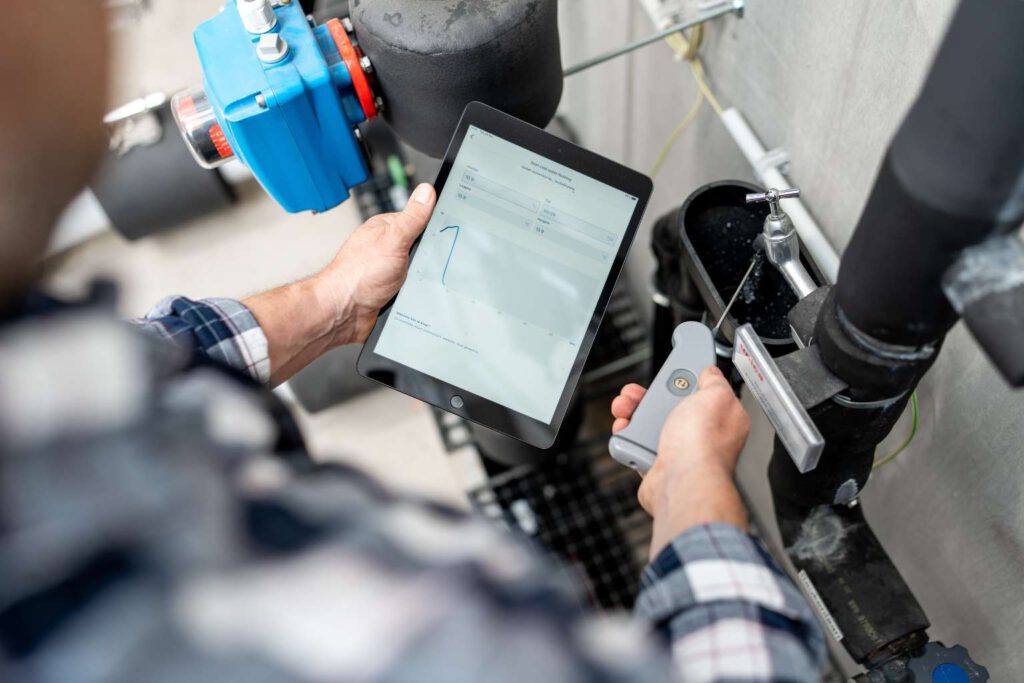
Table of contents
- What is Legionella and Why is Water Temperature Important?
- How Legionella Grows: The Role of Temperature
- Recommended Temperatures for Prevention
- Temperature Checks to Minimise Legionella Risk
- How to Kill Legionella with Water Temperature Control
- The Role of Legionella Risk Assessments in Temperature Management
- Smart Technology for Legionella Temperature Monitoring
- Remote Monitoring Case Break Down
- Conclusion: Protecting Your Facility from Legionella with Proper Temperature Control
- FAQs About Legionella and Water Temperature
What is Legionella and Why is Water Temperature Important?
Legionella is a type of bacteria naturally found in freshwater environments, such as lakes and streams, but it can become a health hazard when it grows in building water systems. When Legionella-contaminated water becomes aerosolised and inhaled, it can lead to Legionnaires’ disease, a severe form of pneumonia.
Water temperature is critical in controlling Legionnaires because the bacteria thrive in specific temperature ranges. If the water in your system falls into these ranges, it creates the ideal environment for Legionella growth.
How Legionnaires Grows: The Role of Temperature
Legionnaires bacteria temperature is a key factor in the bacteria’s ability to grow. In general, Legionella growth temperature occurs in the following ranges:
- Below 20°C (68°F): Legionella is dormant and cannot multiply.
- 20°C to 45°C (68°F to 113°F): This is the optimal growth range for Legionella, with the highest risk occurring between 35°C and 40°C (95°F to 104°F).
- 45°C and 60°C (113°F and 140°F), Legionnaires bacteria can survive but cannot multiply significantly. The bacteria are in a more resistant state at these temperatures.
- Above 60°C (140°F): Legionella bacteria are killed within minutes, with complete eradication at temperatures of 70°C (158°F) or higher.
Understanding these ranges allows facility managers to control water systems and prevent dangerous outbreaks.
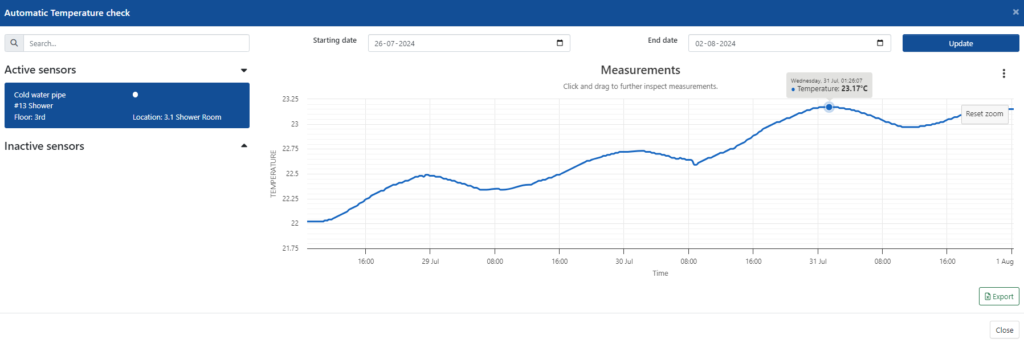
Recommended Temperatures for Prevention
Maintaining the right temperatures in both hot and cold water systems is critical in preventing Legionnaires’ disease.
- Hot Water Systems: To inhibit Legionnaires growth, hot water should be stored at 60°C (140°F) or above, and distributed at 50°C (122°F) or higher. At these temperatures, Legionella is unable to thrive, and the risk of contamination is minimised.
- Cold Water Systems: Cold water should be stored and distributed at temperatures below 20°C (68°F). Legionella cannot grow in cold environments, so ensuring water stays cool is another line of defense.
These temperature guidelines are standard across industries, from healthcare facilities to hospitality, where water safety is a priority.
Temperature Checks to Minimise Legionella Risk
To keep Legionella at bay, it’s crucial to regularly monitor and test water temperatures using Legionella Thermometers. Legionella thermometers are calibrated devices that allow facility managers and engineer to check water temperatures in different parts of the water system, from storage tanks to outlets. Water temperature checks should be conducted at regular intervals, including:
- Monthly checks of hot water storage;
- Quarterly checks of cold water systems;
- Immediate checks after any system disruption, such as repairs or maintenance;
- Regular checks according to the Legionella Risk Assessment.
Frequent testing ensures that any fluctuation in water temperature is caught early, preventing the ideal conditions for Legionnaires growth.
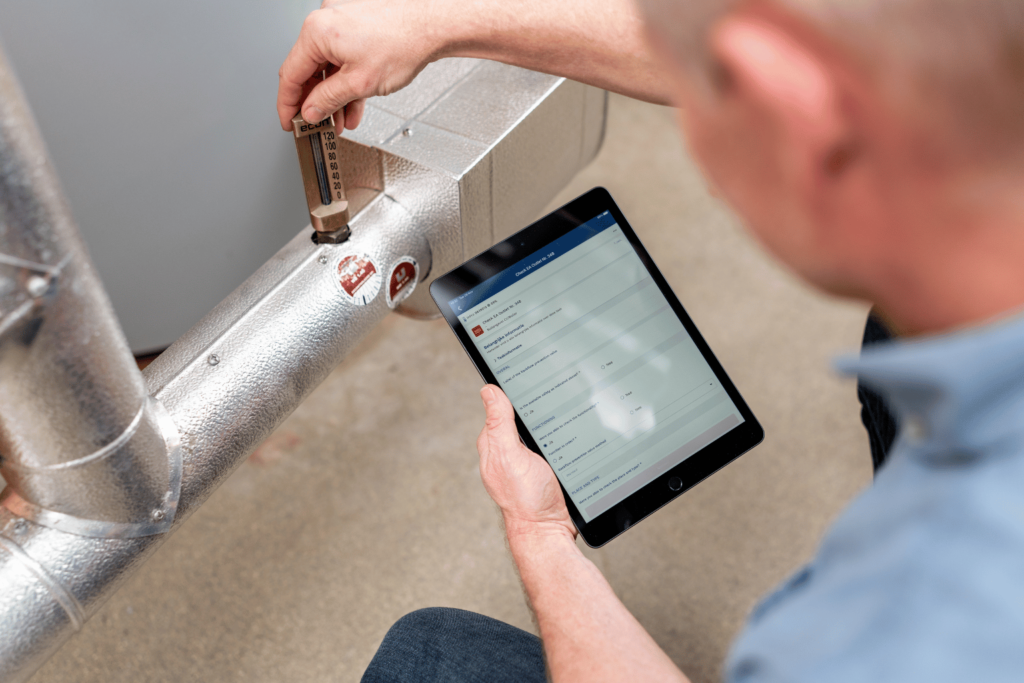
How to Kill Legionnaires with Water Temperature Control
Maintaining temperatures above 60°C (140°F) is essential for killing Legionella bacteria. In case of contamination, a thermal disinfection process can be applied, where water is raised to 70°C (158°F) or higher and flushed through the system to eradicate the bacteria. This process should be done by professionals to ensure the safety of the water system and its users.
The Role of Legionella Risk Assessments in Temperature Management
Performing regular Legionnaires risk assessments is another key component of effective water temperature control. Risk assessments help identify areas where temperature management may be insufficient or where Legionnaires bacteria could thrive. What a Risk Assessment Includes:
- A full audit of water temperatures at storage and distribution points.
- Identification of “dead legs” or stagnant areas in the system where water temperatures may fall within the Legionella growth range.
- A comprehensive plan for corrective actions if unsafe temperatures are found.
Having a proactive approach, supported by risk assessments, ensures that temperature monitoring is not just a one-time effort but part of ongoing water safety.
Smart Technology for Legionella Temperature Monitoring
Emerging technologies are making Legionella temperature checks easier and more reliable. Automated systems can continuously monitor and log water temperatures, alerting facility managers when levels fall within dangerous ranges. Benefits of Remote Temperature Monitoring:
- Instant alerts when temperatures deviate from safe ranges.
- Automated data logging for compliance with safety regulations.
- Reduced reliance on manual checks, lowering the risk of human error.
- Saving time and water on flushing of assets unnecessarily.
Implementing smart technology adds another layer of defense in Legionella prevention and can enhance both the safety and efficiency of your temperature control system.
Remote Monitoring Case Break Down
To better understand the importance of Legionnaires temperature control, let’s look at real-world examples where facilities successfully managed Legionella risks by maintaining proper water temperatures. These examples highlight how diligent temperature control is essential in high-risk environments like hospitals and hotels.

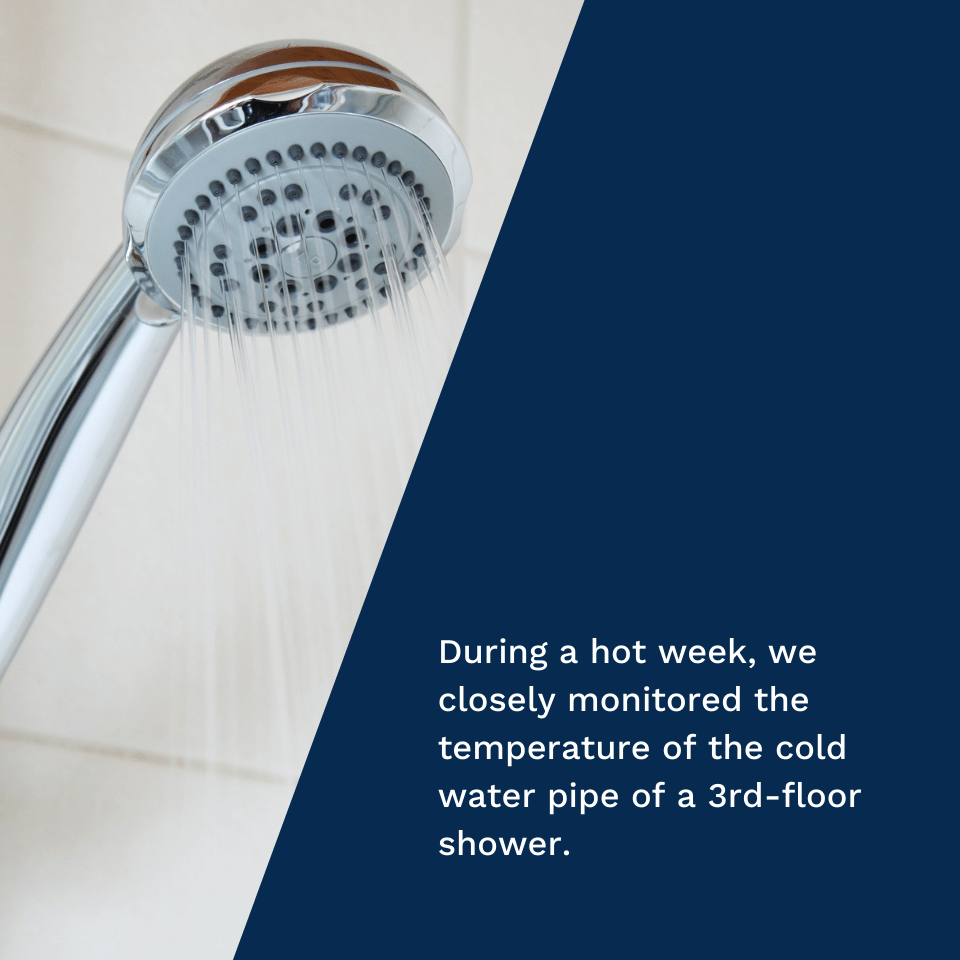
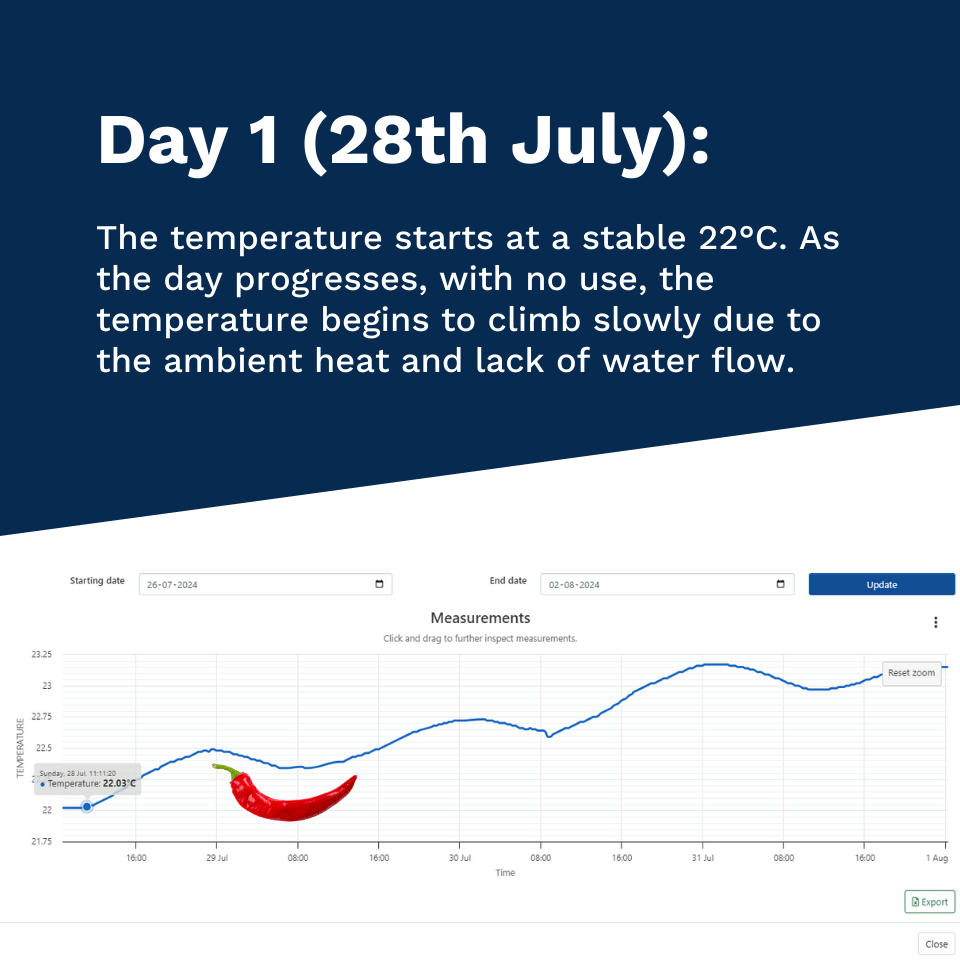


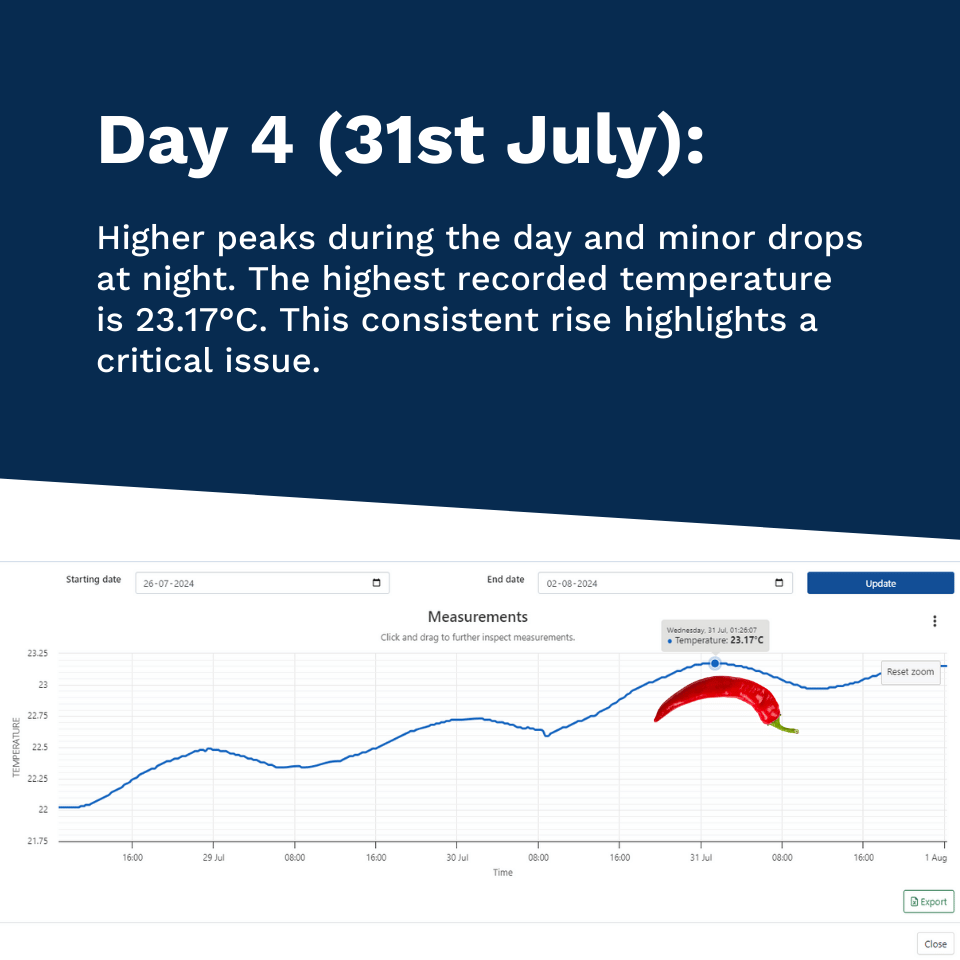
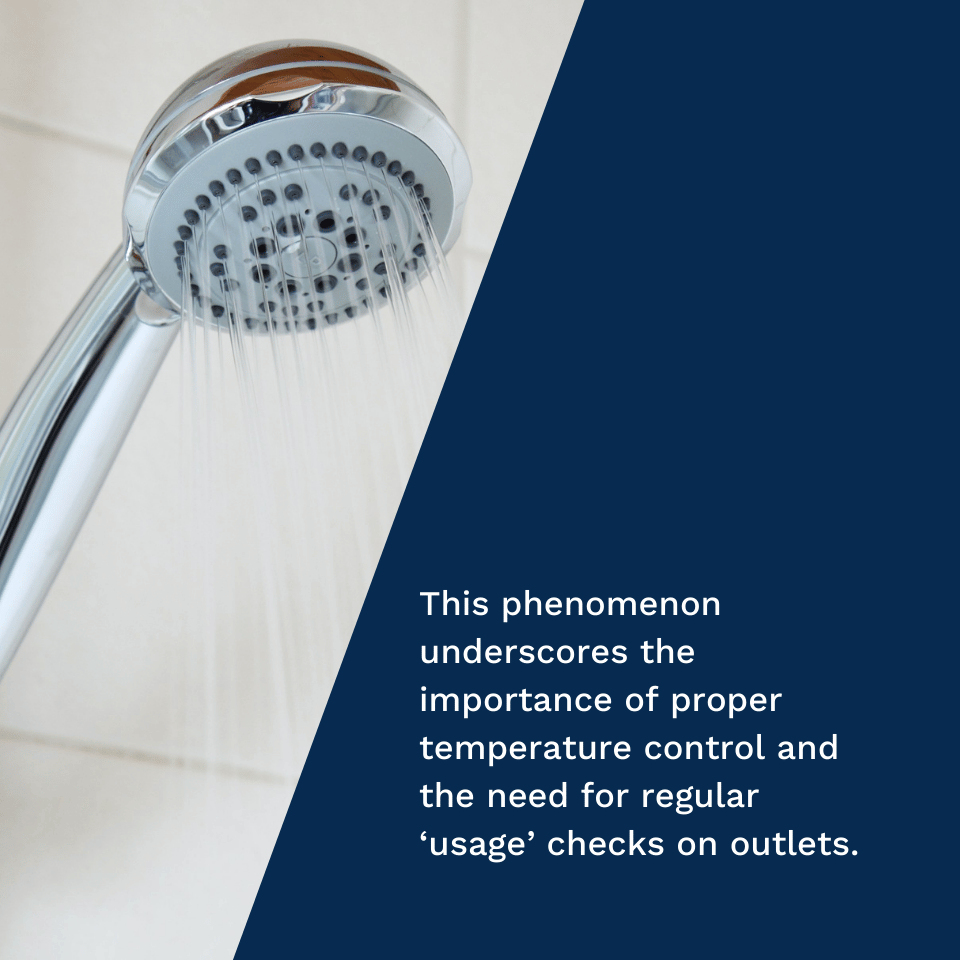
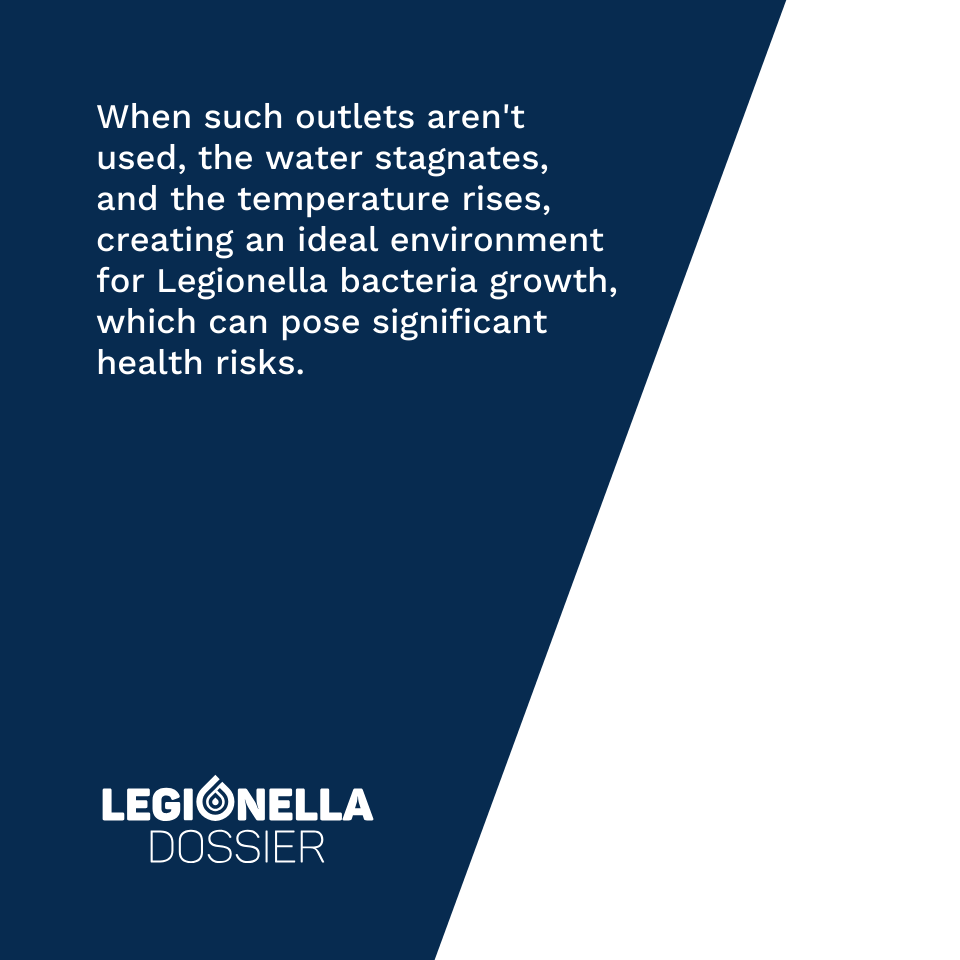

Conclusion
By keeping water systems within the appropriate temperature ranges, conducting regular temperature checks, and understanding the ideal temperature to kill Legionella, facility managers can protect against the dangers of Legionnaires’ disease. Temperature management is one of the most important and cost-effective strategies in preventing Legionella outbreaks, making it an essential part of any water safety plan.
FAQs About Legionella and Water Temperature
Legionnaires grows in temperatures between 20°C and 45°C (68°F to 113°F).
Legionella bacteria are killed at temperatures of 60°C (140°F) or higher, with thermal disinfection occurring at 70°C (158°F).
Monthly checks for hot water storage and quarterly checks for cold water systems are recommended.
Legionnaires cannot multiply in cold water systems if the temperature is maintained below 20°C (68°F). However, if cold water temperatures rise above this threshold, especially during hot weather or due to inadequate insulation, the risk of Legionella growth increases.
While lowering water temperatures may reduce energy costs, it can increase the risk of Legionella growth. It is essential to maintain hot water storage temperatures at or above 60°C (140°F) to ensure safety. Consider alternative energy-saving methods that don’t compromise water safety, such as insulation and smart heating systems.
Legionella bacteria begin to die at temperatures above 60°C (140°F), and complete eradication can occur within minutes at this level. At 70°C (158°F) or higher, the bacteria are killed almost instantly, making thermal disinfection an effective method for removing Legionella from water systems.
“Dead legs” refer to sections of water pipes that are no longer in use but still connected to the main system. These areas can harbor stagnant water, which can fall within the optimal temperature range for Legionnaires growth, posing a serious risk. Regular system maintenance and removing dead legs can help minimise this risk.
Interested?
Experience the benefits yourself!


